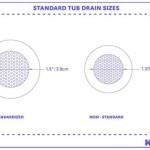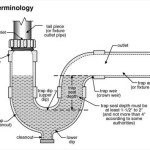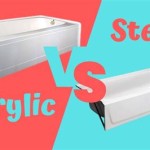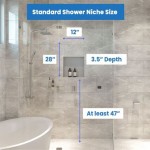The Value of Old Cast Iron Bathtubs
Cast iron bathtubs, once a common fixture in homes across the globe, are now considered a relic of a bygone era. Their heavy stature and traditional design often lead to their replacement with modern, lighter alternatives. However, beneath the patina of time and the weight of history, these old tubs possess an enduring appeal and often hold significant monetary value. This article will delve into the factors that contribute to the value of old cast iron bathtubs, highlighting the key aspects that influence their worth.
Origin and History
The first cast iron bathtub was patented in 1842, ushering in an era of luxurious bathing for the wealthy. These early tubs, often adorned with claw feet and ornate designs, were a symbol of status and refinement. As manufacturing techniques improved, cast iron bathtubs became more accessible to the general population. However, the rise of porcelain-coated steel tubs in the mid-20th century gradually led to the decline of cast iron bathtub production.
The historical significance of old cast iron bathtubs is a primary factor contributing to their value. The age and origin of a tub, particularly those made in the late 19th and early 20th centuries, can significantly impact its worth. For instance, a bathtub manufactured by a renowned company like Kohler or Standard Sanitary, known for their quality and craftsmanship, may command a higher price than a generic tub. Additionally, the presence of unique design elements, such as elaborate feet, intricate carvings, or rare enamel colors, can further enhance its desirability.
Material and Condition
The material and condition of an old cast iron bathtub are crucial factors influencing its value. Cast iron, known for its durability and ability to retain heat, was the preferred material for bathtub construction for many decades. However, the condition of the tub, including the presence of rust, cracks, or chipped enamel, can significantly impact its value. A well-maintained and restored tub in excellent condition will generally fetch a higher price compared to a neglected or damaged one.
The enamel coating on a cast iron bathtub plays a crucial role in its longevity. Enamel, a vitreous glass-like coating, protects the cast iron from corrosion and provides a smooth, hygienic surface. Over time, enamel can chip, crack, or become discolored due to wear and tear. Restoring the enamel can significantly enhance the value of a tub, but it is a specialized process that requires skilled artisans. The cost of restoration and the expertise of the craftsman can vary significantly.
Market Demand and Resale Value
The demand for old cast iron bathtubs has experienced a resurgence in recent years, fueled by the growing popularity of vintage and farmhouse-style décor. Homeowners seeking a unique and characterful addition to their bathroom are increasingly drawn to the charm and authenticity of these reclaimed tubs. This increased demand has led to a rise in their resale value, particularly for those in excellent condition and boasting desirable features.
The resale value of an old cast iron bathtub is influenced by various factors, including its age, origin, condition, and the availability of similar tubs in the market. While some antique tubs can fetch a hefty price, others may be sold for a fraction of their original cost. Researching comparable listings online and consulting with antique dealers or restoration specialists can provide valuable insights into the potential value of a specific tub.
Beyond Monetary Value: More Than Just a Bath
While the monetary value of old cast iron bathtubs is an important consideration for some, their intrinsic value extends far beyond their financial worth. These tubs embody a rich history, a bygone era of craftsmanship and design. Their solid construction and timeless elegance evoke a sense of nostalgia and a connection to the past that modern fixtures simply cannot replicate.
For many, the value of an old cast iron bathtub lies in its unique ability to transform a bathroom into a sanctuary of relaxation and tranquility. It represents a commitment to slow living, a rejection of disposability, and a celebration of enduring beauty. In their timeless design and resilient nature, these tubs offer a tangible connection to a past era and a reminder of the enduring value of quality craftsmanship.

Cast Iron Bath Tub Antique Vintage And Skirts

Rare 6 Foot Cast Iron Clawfoot Tub With Center Drain Gs00312

Rare 6 Foot Cast Iron Clawfoot Tub With Center Drain Gs00312

Large Antique 6 1 2 Ft Cast Iron White Porcelain Spa Footed Bathtub Vtg 392 23e Pick Up Only

Randolph Morris Charlotte 54 Inch Cast Iron Slipper Clawfoot Tub No Faucet Drillings Lg54sl0wsib

Antique Cast Iron Baths Tubs Victorian Enamelled Bath

Antique Cast Iron Baths Tubs Victorian Enamelled Bath

Antique 5 1 2 Cast Iron White Porcelain Tub Old Clawfoot Bathtub Vtg 404 22e

Vintage Cast Iron Clawfoot Tub For 2024

Antique 5 Ft Long Porcelain Over Cast Iron Claw Foot Bathtub








